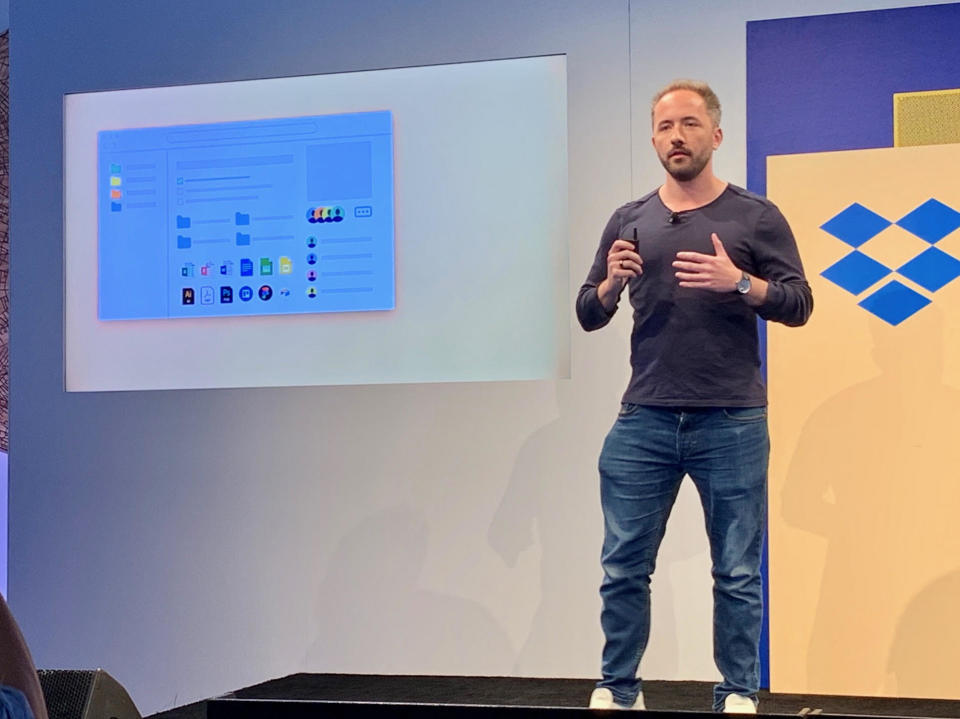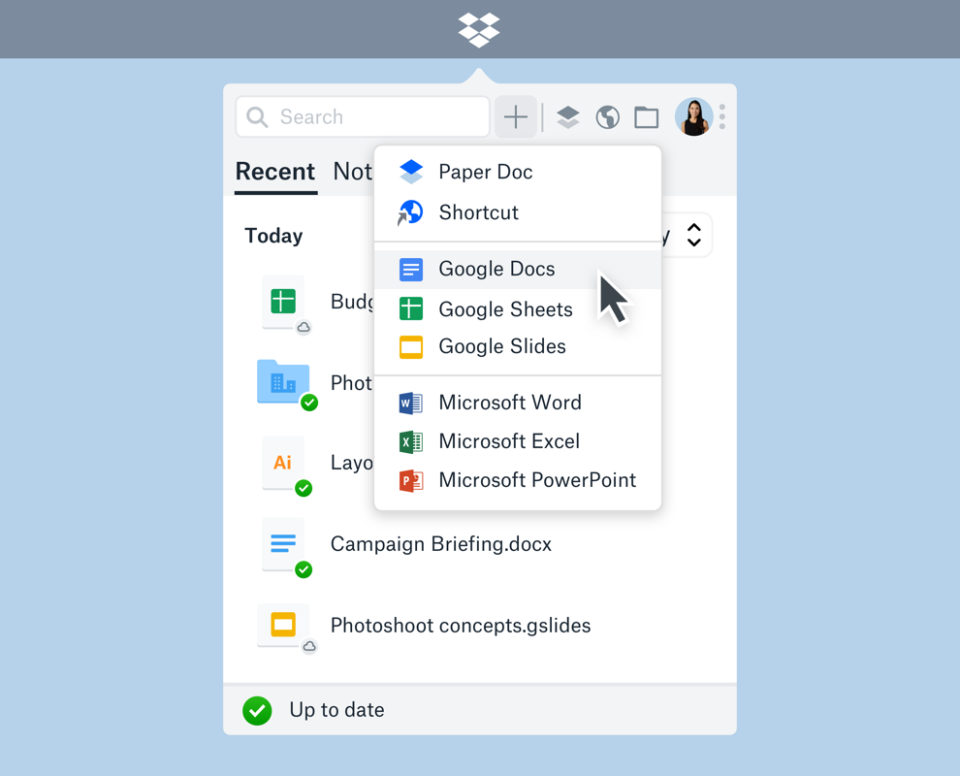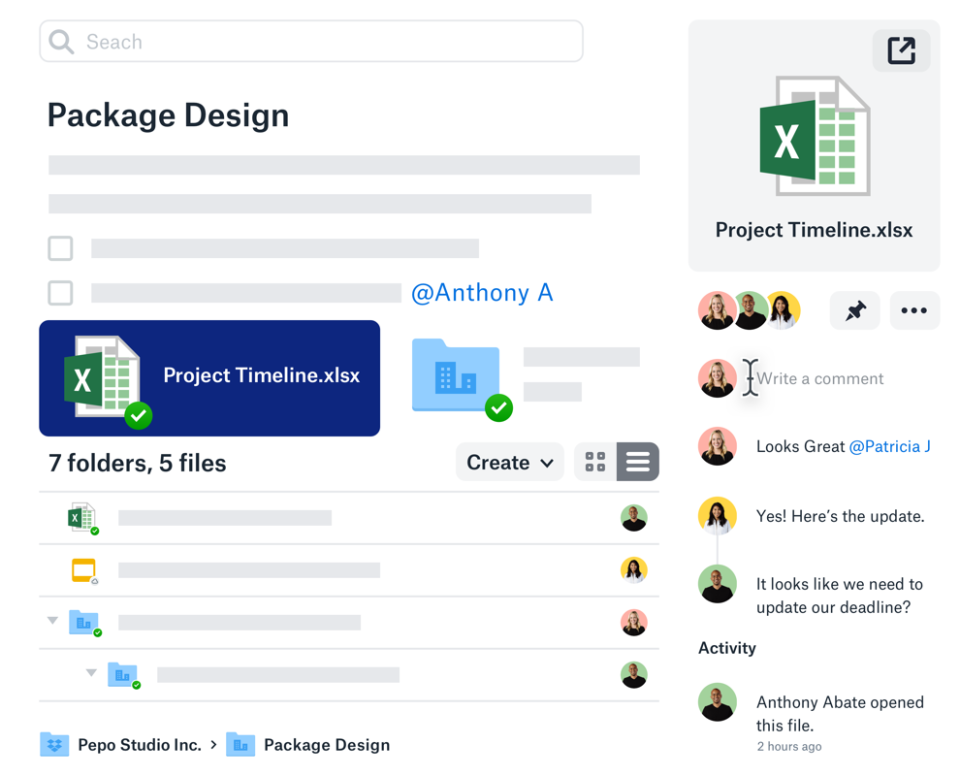How Dropbox is working with Slack, Google, and Zoom to make you a better employee

Dropbox (DBX) wants to make employees better workers.
That was the gist of Dropbox’s announcement on Tuesday in San Francisco, revealing a major redesign aimed at Dropbox Business users that ties into services like workplace messaging company Slack, Google’s (GOOG, GOOGL) G-Suite, and remote conferencing company Zoom Video (ZOOM).
The overhauled Dropbox now revolves around a Mac Finder-like window focused on digital file folders. Click on a folder, and users can see all sorts of new information, including a project description and a history of edits and changes to that project and each document.
Users can also click to edit Google and Microsoft-based docs, spreadsheets, slideshows, as well as Jira and Trello-based projects inside the app, provided they’re stored in Dropbox. And Dropbox users can link their Slack and Zoom accounts so that users can stay on the same Dropbox window to talk with colleagues about what they're working on via chat or video.


“What we see is that end users are facing this sort of crisis of attention that is deepening,” Dropbox CTO Quentin Clark tells Yahoo Finance. ”It's incumbent upon us — the SAAS [Software as a service] tool makers — to bring users back to their work, to reduce that friction.”
Self-serving as it might sound, Clark also has a point. According to a study published on June 5 from researchers at Western Sydney University, Harvard University, Kings College, Oxford University and the University of Manchester, high levels of internet use can have a negative impact on many functions of the brain, including the ability to concentrate on a single task.
In many ways, the tech industry is unintentionally making this problem worse, Dropbox CEO Drew Houston said at the company’s event on Tuesday in San Francisco, with companies throwing more tools and features at their users. And while companies like Apple (AAPL) and Google now offer tools that help users track the amount of time they spend on their devices, others still suffer from the creative philosophy that “more is more” when it comes to features.
To that end, Clark says the newest version of Dropbox takes the cloud service a step forward. Instead of having to open and close a number of apps and services, the new Dropbox design lets users do a number of things inside the app: starting off a Slack conversation, editing Google and Microsoft documents and slide shows, and conducting Zoom video chats from inside the app, for instance. By partnering with these outside companies, Dropbox is taking a safer path, rather than trying to edge out some other enterprise companies by developing and offering competing features.
The move certainly makes sense for Dropbox, which, over the last 12 years since CEO Drew Houston and CTO Arash Ferdowsi co-founded the company, built a business a sort of digital locker that lets users store digital files — photos, documents, projects — and share them over most internet-connected devices. Now Dropbox has more than 13 million business users across 400,000 teams.
And while Dropbox reported a much lower fiscal first quarter 2019 net loss of $7.7 million compared with losses of $465.5 million during the same period a year prior, Dropbox’s path to sustained profitability lies, quite simply, in signing up more paid users. By expanding Dropbox as more than just a digital hub for storing and sharing files — and somehow establishing it as a larger digital workspace — the company wants to drive up user engagement and make the app a more compelling sell for cash-flush businesses.
“If it turns out Dropbox is a place where they go, to jump back into the things they should be working on and staying focused on that, then great,” Clark adds. “So we're kind of putting this [new app] out there and seeing what our users do with it.”
If the new Dropbox ultimately makes users better workers, then that’s a great byproduct, too.
Note: A previous version of this story, published on June 11, 2019, did not clarify the redesigned Dropbox’s focus on Dropbox Business users. It has been updated for clarity.
Follow Yahoo Finance on Twitter, Facebook, Instagram, Flipboard, SmartNews, LinkedIn,YouTube, and reddit.
More from JP:
